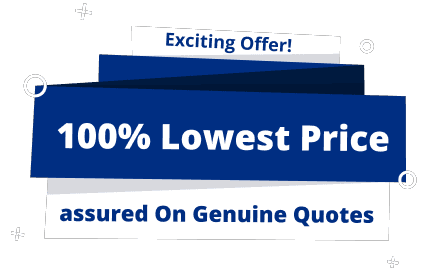Recent Posts
- Which Kind Of Company Will Be Good..
- Which Kind Of Company Will Be Good..
- Which Kind of Company Will be Good..
- Why India is Ideal for Digital Mar..
- 10 Best Countries to Work For Digi..
- Which Kind Of Company Will Be Good..
- 11 Best Countries To Work For Java..
- The Demand For Java Developers In ..
- Best Countries To Work For Web Des..
- Best Countries To Work For SEO Pro..
Since the early 21st century, product development has changed drastically, with organizations around the world lapping up Agile methodologies. Globally, scores of companies have implemented Agile by adopting one of its many elements like Scrum, XP, or Lean development. But not all organizations were able to implement Agile. This is particularly true of large organizations with complex projects and large teams. This led to the introduction of the Scaled Agile Framework (SAFe). The primary purpose of SAFe is to help large organizations implement agile at scale successfully and enjoy its benefits.
SAFe rests on many key elements but the most important thing is that SAFe works on four basic beliefs that are crucial to its effectiveness. These are called the Scaled Agile core values and act as guiding principles for the behavior and action of all the participants of the SAFe portfolio and play a decisive role in the effective and successful implementation of SAFe in the organization. Understanding these SAFe Agile values is essential to ensure the maximum effectiveness of the Scaled Agile Framework. And in this article, we will discuss the four core values of SAFe in detail. But before we try to understand these values, it is important to understand what SAFe is about.
What is the Scaled Agile Framework?
SAFe is a set of practices that have been designed to help large organizations in adopting Agile methodologies. SAFe makes it easier for organizations to scale Agile to the enterprise level by removing impediments that prevent large organizations from reaping the fruits of Agile implementation in their organizations. The base of Agile development is iterative and incremental development in which the collaboration between the teams and their team spirit aid in developing requirements and solutions. Agile suggests a time-boxed and iterative approach that means that the requirements and risks are not forecast beforehand but within a shorter period of one to four weeks so that the development process aligns well with the changing needs of the business. When scaled to the enterprise level through the implementation of SAFe, organizations can see an improvement in productivity, efficiency, and engagement through its faster feedback loop.
SAFe Agile core values
The four core values of the Scaled Agile Framework are Alignment, Built-in quality, Transparency, and Program Execution. These values are at the core of achieving the maximum effectiveness of SAFe and deriving the maximum benefit from it. Let’s discuss them one by one.
1. Alignment
This is the first core value of SAFe. When we say alignment, it literally means that everything or everyone is in one line or properly aligned. In the context of an organization, the alignment would mean that the whole organization has the same vision of the direction in which it is going and the way they are working toward realizing this vision. Alignment is important for any business to reach its goals. All the units of the organization work as a single unit in collaboration with each other. Serious issues can arise if an organization needs to be properly aligned with its vision and goals. Alignment is essential if the organization has to keep up with the fast changes in the world today, face disruptive market forces, and manage distributed teams. A misaligned company would find it very difficult to reach its destination even though it may think it knows where it is going.
Alignment ensures that all the employees and the organization’s leadership clearly understand the organization’s goals and have a well-prepared plan to accomplish these goals. Trained Agile teams can play a significant part in achieving this alignment but the strategy and responsibility of alignment must be addressed to these Agile teams. The enterprise business objectives must be the basis for alignment. It implies that all the organization’s functional units, like product development, research, and marketing, must be on the same page as far as the clearly set goals of the organization are concerned and have created a realistic plan and roadmap to reach those goals. However, alignment does not promote a centralized command or top-down structure. On the contrary, alignment is achieved when everyone is moving in a common direction. Alignment encourages autonomy and empowerment and when there is a decentralized structure in the organization, it allows those responsible for implementing value to make better decisions.
2. Built-in Quality
As Edward Deming says, “The quality, good or bad, is already in the product. It cannot be inspected into a product or service. It has to be built into it.” This makes sense. Isn’t it true that we want quality in everything we do or buy? And the second core value of SAFe focuses on this very thing. This core value of SAFe ensures that the quality is at the same level as desired at every stage of the project development cycle. Quality is checked and maintained throughout the development cycle and is not just checked once the development process ends. It is like individual efforts combined to bring a collective result. Checking quality after the process ends makes little sense so it is always good to check quality at every stage. An advantage of built-in quality is that it makes sure that throughout the development lifecycle, every element and increment of the solution manifests the quality standard. A primary requirement of Lean and flow is the in-built quality. Otherwise, there would be many unverified and invalidated work in the organization, resulting in significant rework and slower team velocity.
Organizations can use five features to check whether the quality is being built-in or not. They are flow, architecture and code quality, design quality, system quality, and release quality. One more thing worth knowing is the system size. SAFe becomes necessary for large operating systems because the bigger the system, the more the importance of endemic quality. So, there can not be any doubt about the significance of built-in quality in large operating systems.
3. Transparency
Building products or developing solutions is always a tough task. A lot of unexpected things happen and plans go away. There are unforeseen circumstances leading to failures or delays. If facts are not disclosed correctly, that will lead to speculations and assumptions. Then the decisions would be made based on these speculations and assumptions and the unavailability of data. Nobody gets anything out of it and it can’t be scaled either. So, an atmosphere of openness is needed and for building such an atmosphere, the main ingredient is trust. Trust is there when business and development mutually rely on each other’s work ethics confidently, particularly in challenging situations. Trust is the essential characteristic of high-performing teams and a healthy work atmosphere.
The primary reason why transparency is essential and needed in organizations is that with transparency, organizations become stronger and can resist failures or setbacks. When things are not going according to plan, trust and an open sharing of information makes facing the problem and finding a solution for them easier. In SAFe, many practices affect transparency positively. The management and stakeholders have access to portfolio Kanban and Program logs and also know of each Agile solutions train and Program Increment. Agile Release Trains (ARTs) can see Program Backlogs. Everyone has clarity on team velocities and Work In Progress (WIP). So, all these things promote transparency in the organization.
4. Program Execution
This is the last of the SAFe core values and is at the heart of SAFe. None of the other things in SAFe will be important if the teams cannot execute and deliver value constantly. In SAFe multiple teams work on a product and synchronize it. This is why SAFe puts great focus on both working systems and results. Since building solutions are complex, even Agile teams may need help to improve value efficiently and consistently. Many organizations begin with individual Agile teams but then are discouraged as these teams need more consistency to deliver considerable value. The Agile Release Trains (ARTs) are formed for this purpose only, which is why the focus of implementing SAFe starts at Essential SAFe.
The ability of ARTs and Solution trains directly affects the ability of value streams to deliver value. And when alignment, built-in quality, and transparency are at the foundation of SAFe, teams are centered on execution. When they encounter problems which is imperative due to the dynamic business environment and, as said earlier, developing solutions is a challenging task, inspect and adapt workshops are there to support them. So they can deliver better incremental values all through the development lifecycle. All in all, this value: stresses the significance of effectively executing the program that includes a quick ability to adapt to changes and faster response to the needs of the customer. Effective program execution helps improve the development process’s speed and efficiency. And with this, the organization can ensure that the product or service is delivered on time and within the budget.
All these SAFe Agile core values work in tandem to align the organization and help it achieve its goals. The two most essential things required for a successful scaled Lean-Agile development and these four SAFe core values are the support of the Lean-Agile leadership and a culture of continuous learning in the organization. The task of the leadership is to connect these core values with SAFe Lean-Agile principles and practices and an attitude of delivering value to the customer. This attitude, in turn, will develop a worthwhile and continuous culture of work for the teams as well as stakeholders.
Want to Level Up Your Skills?
LearnNThrive is a global training and placement provider helping the graduates to pick the best technology trainings and certification programs.
Have queries? Get In touch!

